
Jewelry 3D scanners have revolutionized how jewelers approach the task of repairing, reproducing, and designing rings, bracelets, fittings, mounts, and so much more, saving both time and money in the process.
Fast, efficient, and incredibly easy to use, they are arguably one of the most critical advancements in the industry in recent years.
You’ve come to the right place if you’re looking to level up your jewelry service with some bleeding-edge technological help. This guide will highlight a curated selection of the best jewelry 3D scanners currently available.
We’ve covered a range of price points to suit both solo jewelers and larger setups with cash to throw around, but all these are strong picks regardless of their price tag.
Why 3D Scan Jewelry
Jewelers can obtain highly-accurate, quick, and relatively cheap digital models of existing jewelry pieces and gemstones thanks to a 3D scanner.
This digitization of jewelry has many benefits and uses for jewelers, chiefly replication, adjustments, design, and repairs, or to fast track the creation of high-resolution resin, silicone, or wax molds for traditional molding and casting.
Uses of 3D Scanning Jewelry
Replication/Duplication: Using a jewelry 3D scanner to create a digital model of an antique, custom, or heirloom piece allows a jeweler to quickly and easily create a duplicate.
This can be done both as insurance for precious items or to create a copy for customers to wear while the original remains under lock and key for safekeeping.
Repairs: An editable and modifiable 3D model of a broken piece of jewelry allows jewelers to create modified, custom molds to cast a replacement.
With a 3D model, jewelers can also quickly take stock of what needs repairing without dismantling the piece.
Design: 3D scanning opens new opportunities in the jewelry design phase. With the ability to scan objects from the world around them, jewelers can quickly and cheaply experiment and prototype new designs and ideas.
From personalized pieces for specific customers to radically new designs, jewelry 3D scanners blow the creative possibilities wide open.
Setting: By scanning stones, jewelers can create settings, rings, and designs perfectly sized and shaped to fit.
Similarly, 3D scanning existing engagement rings to capture fit and design details greatly simplifies the creation of matching wedding bands.
Quality Inspection: 3D scanning pieces or even molds to obtain exact measurements allows jewelers to pick up on discrepancies or faults and implement adjustments before committing to an entire production run, saving time and money.
Archiving: 3D scanning jewelry is a cost-effective way to create a digital archive for valuation, insurance, or the conservation of degraded old pieces prone to decay.
How Jewelry 3D Scanners Work
Jewelry 3D scanners employ structured light technology, much like traditional 3D scanners.
The scanner beams a light pattern, usually an LED, onto the object’s surface. A rotating turntable ensures the light hits the object from all angles.
A set of cameras record how the object distorts, deforms, and reflects the light, translating it into a 3D model matching the object’s dimensions and shape via software.
Aside from placing the object on the turntable and triggering the scan, the process is often completely automated.
Jewelers can then edit and modify that 3D model in design software such as a CAD suite for replication, repairs, 3D printing, wax/resin castable models, etc.
Best Jewelry 3D Scanners
Artec Micro
- Price: $29,000-$30,000
- Accuracy: 0.01 mm
- Resolution: 0.029 mm
- Max Scan Volume: 90 × 60 × 60 mm
- Technology: Structured light
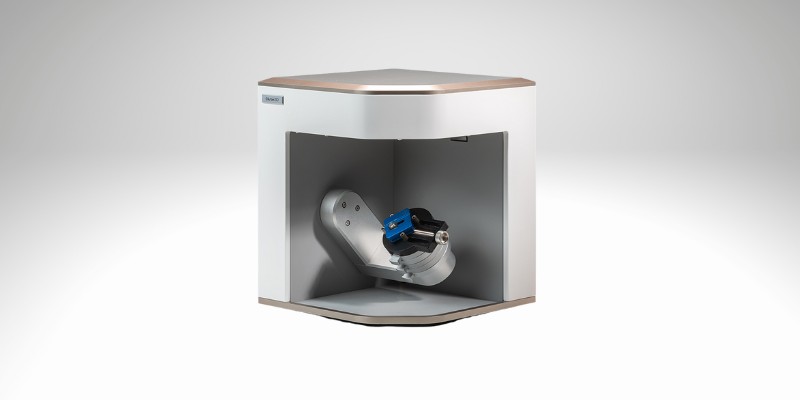
The Artec Micro is a professional, fully-automated desktop-sized 3D scanner with usability and precision at its core.
The Artec delivers pristine models up to 0.01 mm accuracy and a sharp, detailed 0.029 mm resolution with one simple click.
The Artec Micro comes housed in a single all-in-one semi-enclosed shell, fitted with a height-adjustable dual-axis turntable that both pitches and rotates to capture an object’s intricacies.
There are two dual-color cameras, and a blue LED light source capable of scanning in full color.
The Artec Micro has an automatic mode that chooses the optimum scanning path and frame count to keep both scan times and 3D model file sizes to a minimum.
Artec Studio, the software suite that comes with the Micro, offers useful functions such as real-time in-progress scan preview and easy model exporting to all the most popular CAD software.
Though the Artec Micro is suited to various applications, it hits its stride with jewelry thanks to the ability to take an intricate piece such as a brooch, ring, or single gemstone and create a high-precision digital equivalent in minutes.
From there, jewelers can tinker and modify the 3D model for repairs, replication, refitting, and more.
Medit Solutionix D700
- Price: $24,000-$25,000
- Accuracy: 0.01 mm
- Resolution: 0.029 mm
- Max Scan Volume: 90 x 60 x 60 mm
- Technology: Structured light
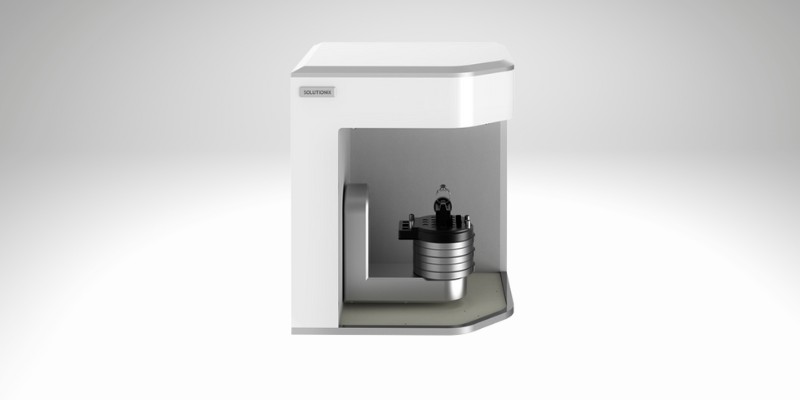
Designed and manufactured by Medit, the Solutionix D700 is a professional-grade semi-enclosed 3D scanner particularly well suited to jewelry.
It specializes in the scanning of small objects with complex geometries.
The Medit Solutionix D700 excels at capturing the surface intricacies of a gemstone, fine details and all, at the high level of precision required by jewelry applications.
It does this thanks to a crisp 0.029 mm resolution allied to a 0.01 mm accuracy, powered by a duo of 6.4 MP cameras and a blue LED light source.
Like the Artec Micro, the Medit Solutionix D700 aims to deliver effortless scanning. Firing up a scan is as hands-off as it gets, requiring you to position the object on the turntable and click once to start scanning.
The scanner automates the rest of the process, scanning objects from multiple angles to create a complete triangle mesh with vivid color texture, exportable to CAD software.
Other notable features include automatic calibration, a scanning path generation tool, and active synchronization.
B9 Scan 350
- Price: $13,000-$15,000
- Accuracy: 0.015 mm
- Max Scan Volume: 90 x 80 x 55 mm
- Technology: Structured light
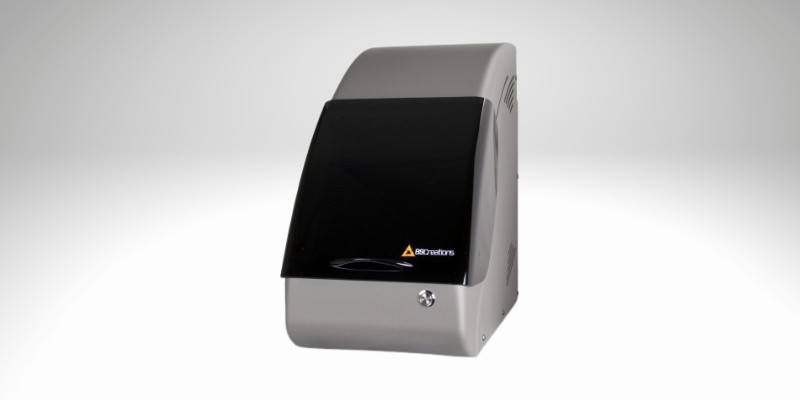
With the B9 Scan 350, B9 Creations are solely focused on providing a 3D scanner suited from the ground up for jewelry.
It’s a desktop-sized option that ships in a compact, fully-enclosed body designed to provide the perfect environment to capture every facet and angle of a piece in great detail.
On the technology side, the B9 Scan 350 combines a blue LED 100 ANSI-lumen structured light, dual 1.3 MP cameras, and a two-axis turntable for 360° scans.
The machine pushes a 0.015 mm accuracy – a bargain considering it costs nearly half the price of market-leading options like the Artec Micro.
It requires minimal setup and the bundled Leios 2 software works a treat, processing high-quality scans in minutes.
Whether you’re reproducing heirloom jewelry, scanning gemstones, or repairing, the B9 Scan 350 is a solid and relatively affordable choice.
Shining 3D AutoScan Sparkle
- Price: $13,000-$14,000
- Accuracy: 0.01 mm
- Max Scan Volume: 100 x 100 x 75 mm
- Technology: Structured light
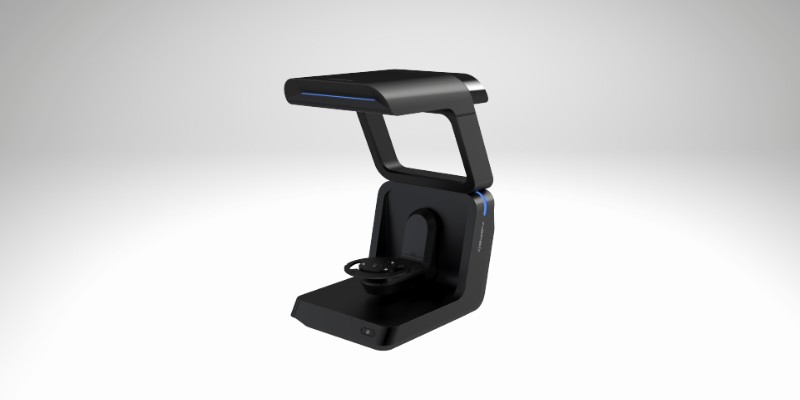
Another scanner designed exclusively to capture the intricacies and detail of jewelry, the AutoScan Sparkle comes from Shining 3D, one of the leading brands of industry-grade handheld scanners.
With that know-how transferred to the AutoScan Sparkle, the company has created a compact desktop machine that, through a combination of AI scanning algorithms, one-click scanning, and powerful JewelScan software, makes easy work of creating digitized versions of even the most complex jewelry pieces.
The AutoScan Sparkle features a three-axis multi-angle scanning turntable, blue LED light source, dual 5.0 MP cameras, 0.01 mm metrology-grade accuracy, and, unusually for jewelry 3D scanners, an above-average 100 x 100 x 75 mm scannable area.
A sleek, compact design with a hinged front panel sees it meld seamlessly into any jewelry workshop or design studio.
Like the B9 Scan 350, the AutoScan Sparkle hits a price point that’s appealing to jewelers on a tight budget, especially considering you won’t find a three-axis turntable on those pricier alternatives.
Aurum LT
- Price: $17,000-$18,000
- Accuracy: 0.01 mm
- Resolution: 0.086 mm
- Max Scan Volume: 110 x 95 mm
- Technology: Structured light
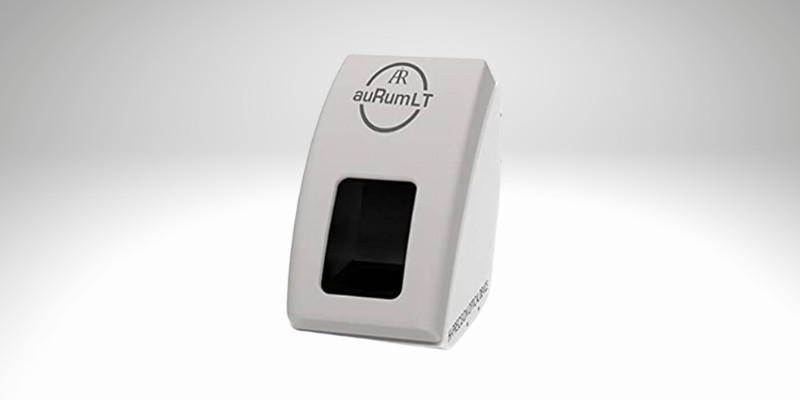
With a focus on capturing highly-detailed scans of small, complex objects such as jewelry, Open Technologies’ Aurum LT is another jewelry 3D scanner well worth adding to your shortlist.
It easily captures all the fine detail of even the most complex gemstones.
The Aurum LT boasts one of the largest scannable areas on the market, hitting a roomy 110 x 95 mm.
While not the best out there, the 0.086 mm resolution is sufficient for producing detail-rich scans of everything from bands to odd-shaped gemstones.
It also features a 360° turntable, two 2.62 MP cameras, one-click scan triggering, and the Open Technologies’ Optical RevEng software, which is stacked with mesh repair options, alignment profiles, and exportable formats for CAD editing.
D3D-s 3D Jewelry Scanner
- Price: $6,000-$8,000
- Resolution: 0.010 mm
- Max Scan Volume: 100 x 130 mm
- Technology: Structured light
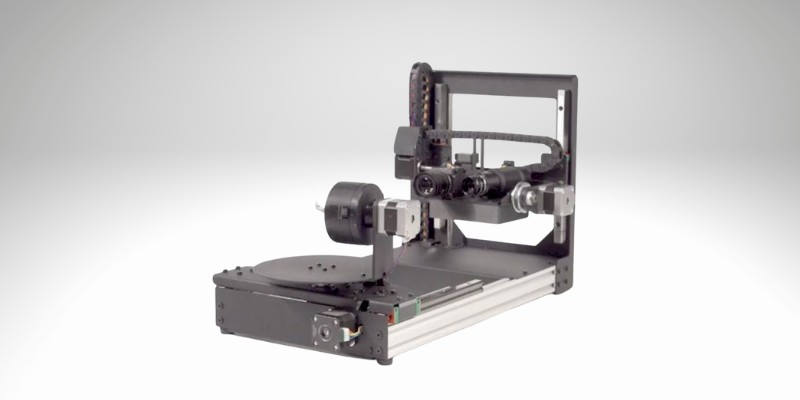
Born of a successful Kickstarter campaign, the D3D-s 3D Jewelry Scanner is one of the most affordable jewelry 3D scanners available.
D3D-s offers such a low price by producing in small batches to keep costs down without sacrificing the quality of the scanned models.
Instead of the industry-standard light pattern scanning method, the D3D-s Jewelry Scanner uses LED-line technology to create a more uniform capture.
The scanner has six degrees of freedom, meaning it can tilt and rotate to capture every aspect of an object for a complete scan with next to no user input.
It features a 5 MP camera capable of a 0.010 mm resolution, a roomy 100 x 130 mm scan area, and compatibility with in-house D3D-s-developed software that allows export to popular CAD suites like Blender, Maya, ZBrush, and many others.
FAQs
Can you 3D scan a wedding ring?
Yes, absolutely.
Scanning both wedding rings and engagement rings is a service a steadily growing number of jewelers are starting to offer, whether to create custom-fitted wedding bands or produce a striking ring at a much lower price.
Additionally, 3D scanning allows jewelers to create 3D models of heirloom wedding rings passed down through the generations for repairs, replication, insurance against loss or irreparable damage, or replacing an aging fitting.
How to choose a 3D scanner for jewelry?
When choosing a jewelry 3D scanner, consider specifications such as accuracy and resolution.
These largely determine what jewelry you can scan and the quality and precision of these scans. We recommend at least a 0.01 mm accuracy and a 0.2 mm resolution for solid results.
Price is also a significant consideration. You can expect to pay anywhere from $8,000 for the lowest cost professional jewelry 3D scanner to $30,000 for the most advanced, high-precision options.
How easy is it to 3D scan jewelry for 3D printing?
Extremely so.
Most jewelry 3D scanners feature one-touch scanning. The process is automated, leaving you with a 3D model that you can quickly process into a format compatible with a high-resolution resin SLA 3D printer.
Choose your object, place it on the scanner, trigger the scan, then process the results via software to obtain the model.
Although we recommend some experience, the process is unlikely to overwhelm first-timers thanks to clear instructions, user-friendly functionality, and intuitive controls.
Other articles you may be interested in:




